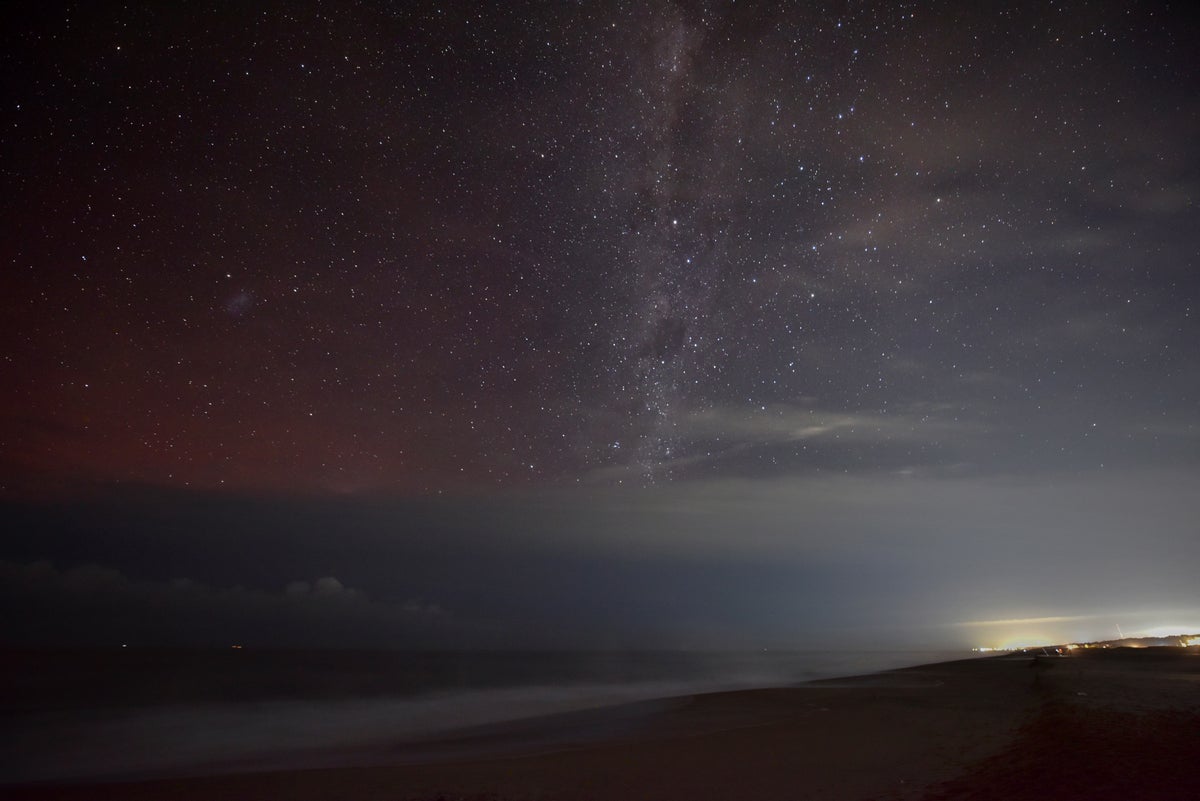
Your support helps us to tell the story
From reproductive rights to climate change to Big Tech, The Independent is on the ground when the story is developing. Whether it’s investigating the financials of Elon Musk’s pro-Trump PAC or producing our latest documentary, ‘The A Word’, which shines a light on the American women fighting for reproductive rights, we know how important it is to parse out the facts from the messaging.
At such a critical moment in US history, we need reporters on the ground. Your donation allows us to keep sending journalists to speak to both sides of the story.
The Independent is trusted by Americans across the entire political spectrum. And unlike many other quality news outlets, we choose not to lock Americans out of our reporting and analysis with paywalls. We believe quality journalism should be available to everyone, paid for by those who can afford it.
Your support makes all the difference.
Scientists have seen a powerful explosion from a mysterious, unknown object in space.
Researchers do not know where the bright flash came from. But they believe that it may be something entirely unknown or never seen before.
In May 2020, a Nasa space telescope was observing the leftovers of an exploded star in a nearby galaxy. As it did, it captured a bright and extremely fast X-ray flash.
Researchers do not know where it came from, or what object might have caused such a dramatic flash. It could be the first X-ray burster found in that Large Magellanic Cloud galaxy, a flare coming out of a mysterious magnetar – or something else entirely, researchers said.
The flash had disappeared within a few seconds and actually went unnoticed for years, according to the researchers who found it. It was detected within more than 20 years of archive data collected by Nasa’s Chandra X-Ray Observatory.
«Have you ever flipped through old photo albums and suddenly found something fascinating hidden in the background of a picture, no one had ever noticed before? Now imagine doing that on a cosmic scale,» said lead researcher Steven Dillmann, a PhD student at Stanford University.
«Using a novel machine learning approach, we looked back through over 20 years of archived observations from NASA’s Chandra X-ray Observatory and discovered a remarkable, powerful X-ray flash from an unknown object outside our own galaxy that had gone unnoticed for years within the vast Chandra archive – a true needle in the haystack event.»
Scientists have never recorded the source of the burst with Chandra or any other telescope, before or since the flash was spotted. That makes it difficult for them to know what it might be.
It could be an X-ray burster, which happens when a neutron star becomes locked in orbit with a normal star and rips its gas away. As it does, it kicks off an explosion that can come with a powerful burst of X-ray radiation.
No X-ray burster has ever been spotted in the Large Magellanic Cloud before. The LMC is a small galaxy that neighbours own own Milky Way.
It might also be a magnetar, researchers believe. Those are neutron stars with extremely powerful magnetic fields, which release flares that are among the most explosive events in the universe.
Scientists have never seen these X-ray energy levels from such an event, however.
It is also possible that the phenomenon is something else entirely, a new kind of cosmic explosion that has not been seen before.
«This discovery reminds us that space is dynamic and ever-changing, with exciting phenomena occurring constantly,» said Mr Dillmann.
«It also demonstrates the value of using artificial intelligence for scientific discovery in archived astronomical data – there might be countless other discoveries waiting to be found in observations we’ve already made.»
The finding is reported in a new paper, ‘Representation learning for time-domain high-energy astrophysics: Discovery of extragalactic fast X-ray transient XRT 200515’, published in the journal Monthly Notices of the Royal Astronomical Society.

